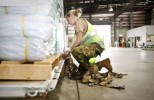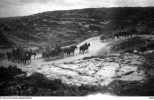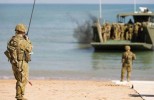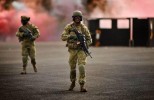Search
Using the filters to the left, click your selection, it will become bold and filter the results, click it again to remove that filter.
State actors have lagged non-state opponent use of media in recent decades. Such proficiency in the realm of traditional media pales in comparison to recent circles run around state efforts in the social media arena, the recruiting success of the Islamic State of Iraq and Syria (ISIS) providing a prime example. Observations from Israel’s 2014 Operation Protective Edge (OPE) suggest a number of lessons relevant to any in government – Defence or otherwise –seeking to redress the imbalance. Backdrop: …

With the release of Archipelagic Manoeuvre , Army set out its big idea for land power's future employment. It is the operational "way" that strategic ends can be achieved. However, what is the concept that links this idea to the wider employment of military power, or the other levers of national power? How does this relate to Australia's strategic culture? Finally, what is the strategic purpose of this manoeuvre? Although Archipelagic Manoeuvre is the foundation of a future operational concept, it can …

'Big data' is not a new concept. In fact, it is the processing of big data that determines your suggested books on Amazon, or the advertisement that plays before your YouTube video. Digital corporations such as Google and IBM have been harnessing big data for much longer than mainstream academia has been discussing it, the latter for at least two decades. Big data is, in its simplest form, the analysis of extremely large data sets to reveal patterns, behaviour and trends, especially in a human behavioural …

As Army Officers we’re trained to respond to low probability, high impact events so maybe it’s a product of my profession or perhaps I’m a pessimistic realist. Whatever the case, I can’t help but question the underlying Western cultural bias towards the utopian future. In my view the probability of a disruptive future is actually quite high. In fact I contend that most developed nations are likely to find themselves as small islands of privilege surrounded by a sea of chaos. Perhaps not as bad as …

2016 is set to be a significant year in the development of virtual reality (VR) technology, where major industry players such as Oculus, Sony and HTC are launching or have launched key consumer VR products. So, what are virtual reality, augmented reality (AR) and mixed reality (MR)? How will they change the way we experience the world, and how will they shape future land warfare? The reality continuum spans from simple overlaying of information into the users vision, to full immersive 3D virtual reality …

‘Sound logistics forms the foundation for the development of strategic flexibility and mobility. If such flexibility is to be exercised and exploited, military command must have adequate control of its logistic support’ - Admiral H. Eccles , Logistics in the National Defense In an earlier article I described how an increasingly dispersed battlefield influences logistics, and the capacity of a commander to exercise what Admiral Henry Eccles describes as ‘logistic control’. It articulated a need for …

‘It is no great matter to change tactical plans in a hurry and to send troops off in new directions. But adjusting supply plans to the altered tactical scheme is far more difficult’ – General Walter Bedell Smith (Chief of Staff to General Dwight D. Eisenhower, Supreme Headquarters Allied Expeditionary Force from 1944-1945) [1] The question of how dispersed forces can be sustained effectively has been recently raised in a number of blogs and articles , but the problem is far from being new. The …

Previously I argued that the battlefield has always been dispersing, and tactics have adjusted accordingly, posing challenges for logistics planners and commanders alike. Whether it be to avoid obliteration, or in response to the requirement move and sustain forces across greater distances or difficult geography, logisticians must approach the principle of ‘flexibility’ beyond its use as a by-word. But is really isn’t their problem to resolve, at least not in isolation in a brigade maintenance area or …

Clausewitz believed that the ways and means of warfare were determined by a combination of four factors; the characteristics of the belligerents, the context of their situation, the 'spirit of the age' of war, and the nature of war itself. 1 His view may seem self-evident to any student of war, but as strategist Colin S. Gray writes, militaries and strategic policy makers often conceptualise without a deep understanding of the conditions intrinsic to a military's approach to war. 2 Sir Julian Corbett’s …

In prefacing his classic work on military logistics Pure Logistics , United States Marine Corps officer Colonel George C Thorpe declared that ‘the conclusion is irresistible that the military themselves know next to nothing about logistics’. As a marine infantryman teaching at the US Naval College in 1917, Thorpe had little professional compulsion or explicit need to write on logistics. However, personal experiences of American brush wars and observations made of the expeditionary war being fought on the …

